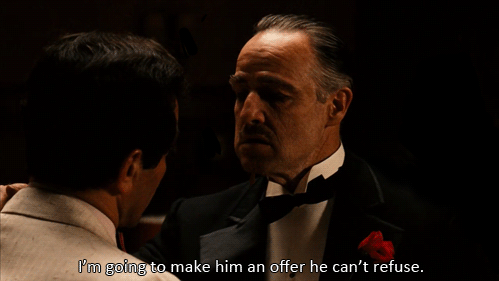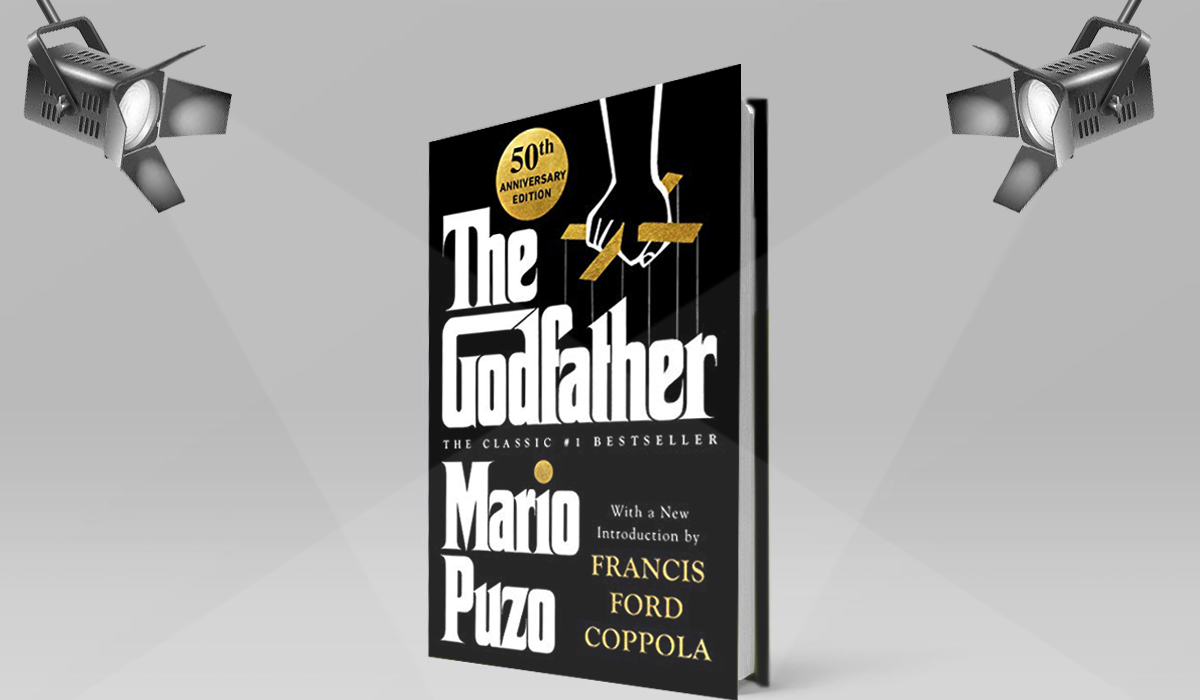You don’t have to be a film buff to have seen or heard about The Godfather. Francis Ford Coppola was the director and mind behind this film that has surpassed generations, and is still considered to be one of the best movies ever created — yep, it’s up there with the likes of Citizen Kane!
But did you know that like all great films, such as Jurrasic Park or Schinder’s List, Coppola’s film was an adaptation based on a novel by the same name?
If not, get ready to learn more about the history and significance of one of Hollywood’s most impressive cinematic masterpieces.
It’s a real page-turner.
From the Book to Brando on the Big Screen
The Godfather was initially published on March 10, 1969. Mario Puzo, also known by his penname of Mario Cleri, crafted a story detailing the lives of Mafia gangsters while writing pulp journalism in his hometown of New York City.
Due to his bad vision, Puzo was not allowed to join the military and thus threw himself into his writing. Initially, the book that started The Godfather phenomenon — and Puzo’s career — was written as a way to simply make ends meet. He had previously written two other novels, though they didn’t amount to much.
The Godfather, however, was the turning point in the author’s career. It climbed the ranks of the New York Time’s Best Seller List. People across the nation were reading, and finally paying attention.
Before long, director Francis Ford Coppola met with Puzo and expressed interest in developing the novel into a feature film to bring the story to the masses who weren’t necessarily reading at the time. The story of the Corleone family jumped off the page and was begging for a cinematic makeover.
Puzo later proved to be an asset when he also lent his creativity to help formulate the screenplay for the film adaptations.
He went on to write several more books about organized crime. In all, Puzo also wrote four more novels in the Godfather Saga. The most recent novel, The Family Corleone, came out in 2012, despite Puzo’s tragic death due to heart failure in 1999. However, he has undoubtedly left a legacy behind. Over 30 million copies of The Godfather have been sold around the world.
Becoming a Blockbuster
Marlon Brando gave new life to the Don’s character. The dedicated actor even stuffed cotton in his mouth to provide himself with a more bull-dog-ish appearance as the Don during his audition. It certainly made him more memorable.
Could you recite Don Corleone’s most famous lines any other way?
Talented actors like Al Pacino, James Caan, and Robert Duvall also lent their talents to help make Coppola’s vision a reality. The movie trilogy grossed over $259 million at the domestic box-office or over $674 million adjusted with inflation.

The Godfather’s Impact on Pop Culture
Various films and TV shows have parodied, or have been inspired by this classic mafia story produced from the minds of Puzo and Coppolla.
From the Disney movie, Zootopia, to everyone’s favorite yellow TV family, The Simpsons, The Godfather has inspired various scenes, lines, and characters in modern-day pop culture.
But why has it been referenced in the last forty years?
It’s a rich story about redemption, betrayal, and the meaning of family.
It’s also well remembered due to the drastic and transformative character arch, Al Pacino’s character goes through during the film.
The bottom line is that it’s a marvel when it comes to storytelling, whether you’re reading the book or watching the film.
Final Thoughts
The Godfather is thought to be one of the most original and stunningly shot films of all time, despite the fact that it first hit theatres in March 24, 1972. It’s on every movie buff’s Top 10 list easily. Furthermore, due to its innovation in storytelling and glorious camera work, the film won’t be leaving our minds and hearts any time soon.










